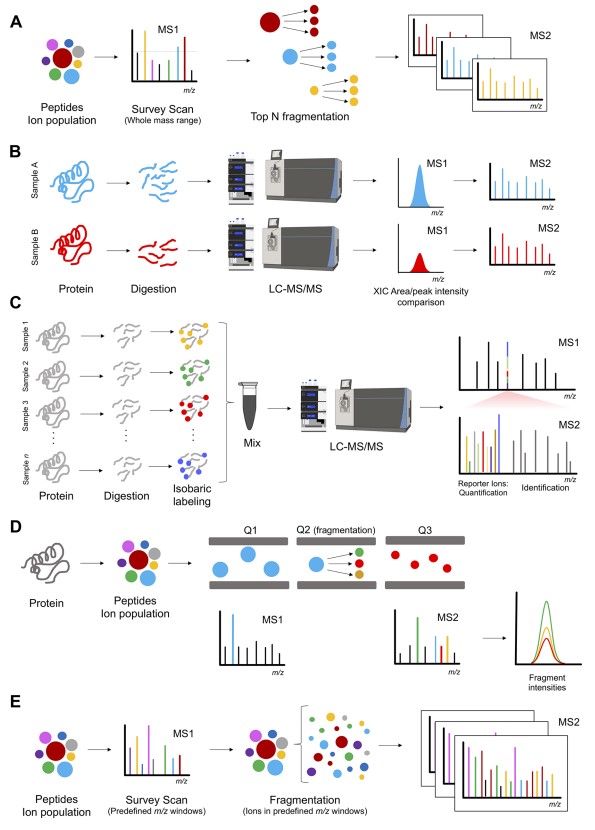The discovery of effective targets to restrict the growth and spread of pathogens is critical to infectious illness treatment. Creative Biolabs provides high-throughput proteomics analysis services that can identify disease-associated proteins, thus helping to discover possible targets for intervention in infections.
1. Sample preparation.
Our skilled professionals will provide you with detailed sample preparation directions to ensure that the samples you work with are representative and of high quality.
2. Sample processing and quality control.
To assure the reliability of analytical results, we employ cutting-edge sample processing and quality control techniques.
3. Protein isolation.
Protein separation techniques such as gel electrophoresis and liquid chromatography are used to separate proteins from samples.
4. Proteomics analysis.
Comprehensive proteomic analysis of samples using mass spectrometry, including data collection and quantification of protein identification and modifications.
5. Data processing and analysis.
Extensive data processing and parsing employing cutting-edge bioinformatics techniques and algorithms, including differential expression analysis, functional enrichment analysis, and protein interaction network analysis.
6. Reports and interpretation.
Detailed experimental reports and data analysis results, including test technique, analysis results, conclusions, raw data, graphs and photos, and so on, are accessible. To verify the accuracy and trustworthiness of the data, our experienced team will conduct a thorough examination and assessment of the experimental method and data analysis.
 Fig. 1 Quantitative proteomics strategies.1
Fig. 1 Quantitative proteomics strategies.1
When provided with samples set in multiple comparable groups and in triplicates, we can perform a comprehensive bioinformatics analysis of proteomics data.
Bioinformatics analysis helps to quickly identify proteins present in samples in large-scale protein mass spectrometry data. Proteins in samples can be efficiently and accurately identified by comparing experimental data with sequences and mass spectrometry spectra from known protein databases.
Bioinformatics helps to perform protein sequence alignment to discover structural, functional and evolutionary relationships between similar proteins.
Bioinformatics analysis to predict and annotate protein function. By comparing the sequence, structure, domains and other information of proteins in relevant databases, it is possible to predict the function, subcellular localization, and signaling pathways involved in proteins.
Through gene ontology annotation, bioinformatics analysis can help to identify the composition and function of proteins, enabling a better understanding of the structure and function of proteins as well as their regulation in life processes.
Bioinformatics analysis can also predict the secondary structure, tertiary structure, and isolated expression structure domains of proteins based on their sequence information. The results of these predictions can help researchers further understand protein functions and interactions.
Bioinformatics analysis analyzes and studies protein structures, including using methods such as protein structure prediction and protein structure comparison. These methods can help researchers assess similarities and differences between protein structures and can be used in studies of classification and functional variation.
The application of proteomics analysis involves research in the areas of protein expression, protein modification and protein interaction. With Creative Biolabs' proteomics analysis service, you can obtain comprehensive proteomics data to better understand the mechanisms of infectious disease onset and progression, giving strong support for the development of new therapeutic agents. Please contact us to initiate a target discovery proteomics analysis.
Reference: